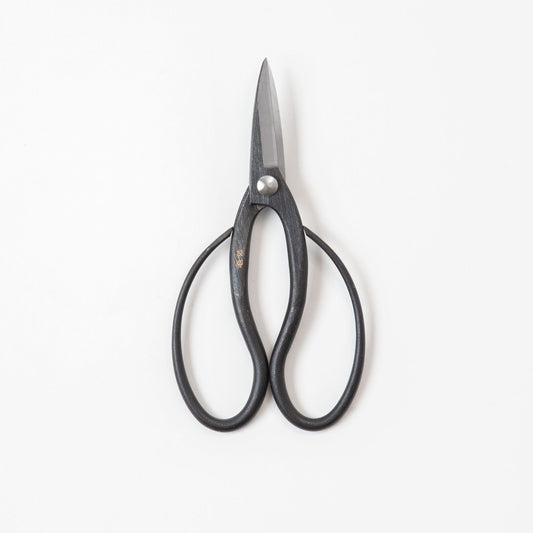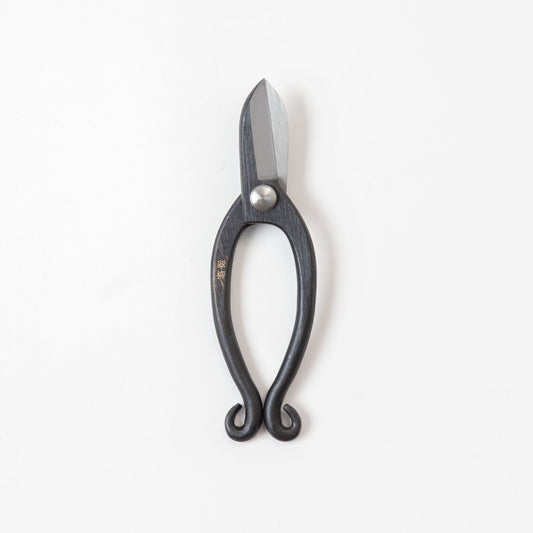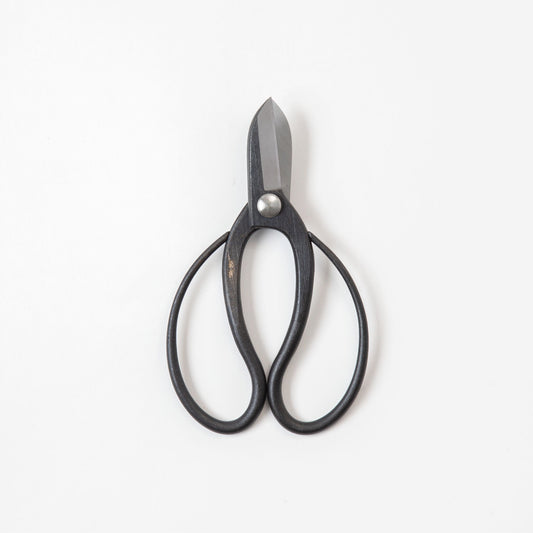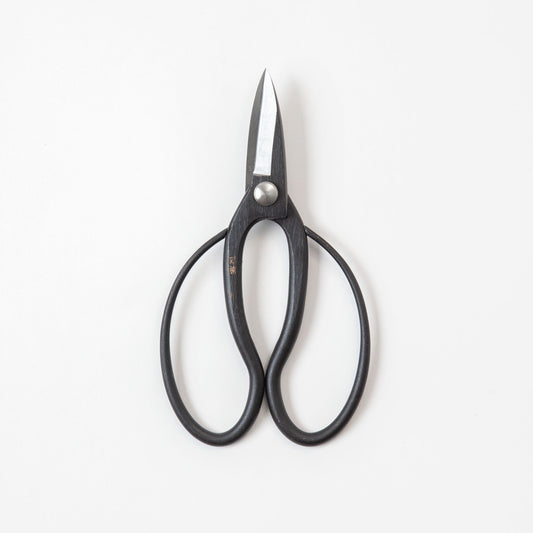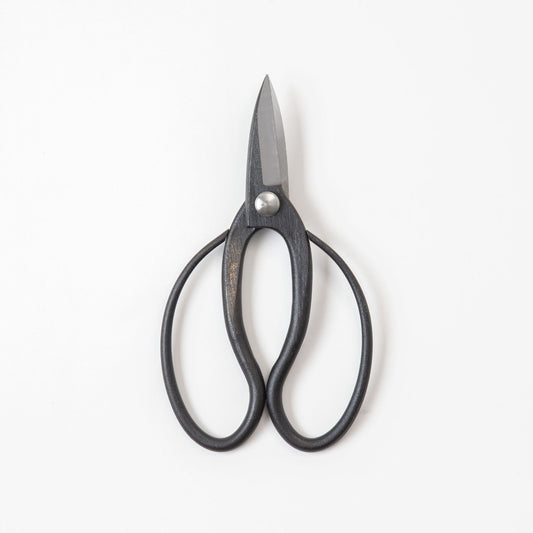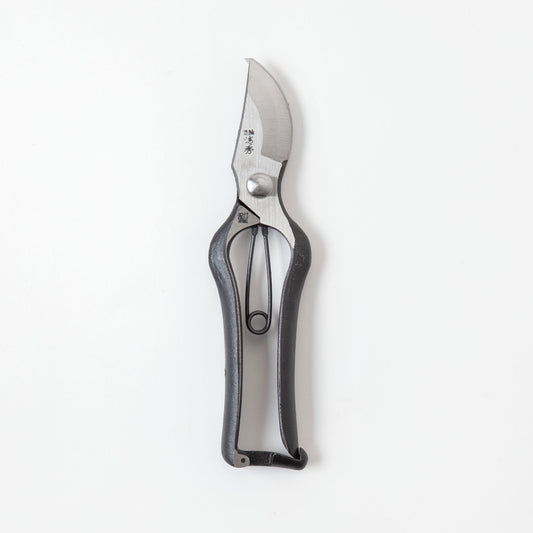Have you ever marveled at the intricate shapes of bonsai trees or admired the delicate balance of an ikebana arrangement? The secret behind these horticultural feats might surprise you: it’s the unique design and utilization of Japanese pruning shears.
These beautifully crafted tools boast a rich history intertwined with Japanese sword-making traditions. Unlike their Western counterparts that often crush stems, Japanese shears utilize a bypass mechanism for a clean, precise cut. Join us as we delve into the fascinating world of Japanese pruning shears, exploring their history, unique features, and the wide range of uses that make them a favorite among gardeners worldwide.
Contents
- A Brief History of Japanese Pruning Shears
- The Qualities of Japanese Pruning Shears
- Different Types of Japanese Pruning Shears
- The Art of Ikebana and the Importance of Precision Cuts
- Essential Cutting Techniques with Japanese Shears for Ikebana Arrangements
- Pairing Flowers with Japanese Vases
- omakase Recommendations - Japanese Vases
- In Conclusion
A Brief History of Japanese Pruning Shears

The history of Japanese pruning shears is a fascinating tale of adaptation and refinement. While the exact origin remains unclear, their development likely began alongside the rise of elaborate Japanese gardens in the Heian period (794-1185 AD). The meticulous maintenance required for these gardens necessitated specialized tools and shears influenced by the techniques of Japanese swordsmithing. The use of high-carbon steel, a hallmark of sword-making, ensured the shears possessed exceptional sharpness and durability.

A pivotal turning point came in the 19th century with the decline of the samurai class. Swordsmiths, facing a dwindling demand for katanas, turned their skills towards crafting high-quality tools, including pruning shears. This influx of skilled artisans significantly refined the design and production of Japanese shears. The traditional bypass mechanism, where two razor-sharp blades slide past each other for a clean cut, became the standard, further emphasizing precision over brute force. This dedication to meticulous craftsmanship and the adoption of sword-making techniques laid the foundation for the exceptional quality of traditional Japanese pruning shears.
The Qualities of Japanese Pruning Shears

In the world of pruning shears, Japanese pruning shears stand out due to their meticulous craftsmanship and precise cutting. As briefly mentioned, unlike their Western counterparts, which often rely on a crushing action to sever stems, Japanese shears favor a bypass mechanism. Two razor-sharp blades glide past each other, creating a clean, surgical cut that minimizes damage to delicate plant tissues. This translates to healthier plants and aesthetically pleasing results, particularly important for tasks like shaping bonsai trees or creating precise cuts in ikebana flower arrangements.

Furthermore, Japanese shears are renowned for their superior blade quality. High-carbon steel, a material also favored by Japanese swordsmiths, equips these shears with exceptional sharpness and edge retention. This allows for effortless cuts through even tough branches, minimizing hand fatigue and ensuring a smooth, clean finish. The craftsmanship extends beyond the blades, with ergonomic handles often crafted from wood or other comfortable materials that promote a natural hand position for extended use. These unique qualities combined elevate Japanese pruning shears from just simple garden tools to instruments of horticultural artistry in the hands of gardening enthusiasts.
Different Types of Japanese Pruning Shears
When it comes to choosing your ideal Japanese Pruning Shears, there are various types to consider. Just like a master chef utilizes a variety of knives for different tasks, Japanese shears come in a variety of styles, each meticulously crafted for a specific purpose. Here are just a few of the :
- Bonsai shears: The meticulous shaping of bonsai trees demands exceptional precision. Bonsai shears come in various sizes and styles, some featuring curved blades for intricate detail work and others with straight blades for cleaner cuts on thicker branches.
- Ikebana (or Ikebono) shears: Graceful and elongated, ikebana shears boast long, slender blades perfect for the delicate art of Japanese flower arranging. Their sharp blades ensure clean cuts that preserve the natural beauty of stems and leaves.
- Koryu vine shears: Known for their short, rounded blades, Koryu shears are adept at harvesting vegetables like eggplant and cucumbers, ensuring clean cuts that minimize damage and promote optimal water absorption.
- Okubo shears: A versatile option, Okubo shears feature medium-length blades that excel at general pruning tasks. Their design allows for powerful cuts on branches while maintaining maneuverability for more delicate work.
- Karikomi (branch cutters): Designed for tackling thicker branches, karikomi shears utilizes the previously mentioned bypass mechanism with robust blades and long handles for the increased leverage needed to tackle branches.
These are just a few examples of the diverse range of Japanese pruning shears available. Each type is crafted for its specific purposes and excels at what they are designed for, ensuring a perfect cut for every pruning task.
The Art of Ikebana and the Importance of Precision Cuts

Continuing our exploration of Japanese pruning shears, let's briefly delve into the fascinating world of ikebana, the ancient Japanese art of flower arranging. Unlike their Western counterparts that celebrate overflowing vases, ikebana focuses on minimalism and capturing the essence of a plant through precise cuts.

Precision plays a critical role in achieving the delicate balance and harmony that defines ikebana. Each cut, meticulously made with these shears, is deliberate. The length and angle of a stem, and the placement of a bud, all contribute to the overall form and symbolism of the arrangement. A precisely placed cut on a branch can evoke a sense of movement, while a clean snip on a flower stem can highlight its delicate beauty. Through these intentional cuts, the ikebana artist breathes life into the arrangement, fostering a conversation between the viewer and the natural world.
Essential Cutting Techniques with Japanese Shears for Ikebana Arrangements

As mentioned, Ikebana transforms floral displays from decoration to meditative expression. Precise cuts are the foundation of this art form, ensuring balance, harmony, and a connection with nature in every arrangement. But with a variety of cuts and flower types, how do you know which technique to use? Here are some basic but essential cutting methods for ikebana, along with the ideal shears for each:
- Straight Cut: This fundamental cut signifies heaven and is used for the main branch of your arrangement. Employ ikebana shears, known for their long, slender blades, for a clean, straight cut at the desired length. The sharp blades minimize damage and ensure the stem can absorb water efficiently.
- Angled Cut: Representing man and symbolizing stability, angled cuts are often used for secondary branches that branch off from the main stem. Here, medium-length shears like okubo shears offer good control. Hold the stem at a 45-degree angle and make a clean cut with the shears, ensuring the angled face points outwards for a visually pleasing presentation.
- Diagonal Cut: This cut, symbolizing earth, is ideal for accent flowers that add a touch of color or visual interest. Use pointed ikebana shears for a precise diagonal cut, allowing the flower to face upwards and drink water effectively. Experiment with different angles for a dynamic composition.
Mastering these basic cutting techniques is just the first step in your ikebana journey. Remember, ikebana is about more than just cuts. Other techniques like splitting stems, burning milky stems to prevent sap from leaking and using kenzan (spiked flower holders) for stability all play a role in creating a harmonious and long-lasting arrangement.
Pairing Flowers with Japanese Vases

Having mastered the precise cuts with your Japanese shears, it's time to elevate your ikebana creations even further. The perfect vessel awaits, for a true ikebana masterpiece requires a harmonious marriage of form and function. Enter the world of Japanese vases, where timeless aesthetics meet functionality, creating the ideal stage for your floral arrangements.

Unlike their Western counterparts that often boast elaborate embellishments, Japanese vases embody a philosophy of elegant simplicity. Think clean lines, natural materials like ceramic or porcelain, and a muted color palette that allows the beauty of the arrangement to take center stage. Many feature subtle textures or understated patterns that complement, rather than compete with, the natural elements. The focus is on creating a visual conversation between the flowers, the cuts you've made with your shears, and the vase itself.
omakase Recommendations - Japanese Vases
Once you’ve found your perfect pair of Japanese pruning shears and have some beautifully cut blossoms ready to display, you’ll need an equally beautiful vase. Here are a couple of our recommendations that you can find here on our store:
Seiran Shigaraki Vase
This stunning Seiran Shigaraki Vase, meticulously handcrafted by HECHIMON artisans, captures the serene beauty of a mountain landscape with a captivating blue glaze. Inspired by the vastness of the night sky, the Shigaraki vase's tall and slender form makes it perfect for Ikebana arrangements with graceful, upward-reaching branches.
Flower recommendation: We'd recommend using wispy, white Cockscomb flowers or delicate Pink Lily stems that scale the heights of the vase, mirroring the starry expanse it evokes.
Spray Bucket Shigaraki Vase
Bring a touch of rustic charm to your home with the Spray Bucket Shigaraki Vase by HECHIMON. It embodies the essence of traditional Japanese pottery. Its wide, open form, reminiscent of a spray bucket, is perfect for Ikebana arrangements that celebrate the natural beauty of flowers.
Flower recommendation: We'd recommend a cascading display of wildflowers like goldenrod or feathery pampas grass. Their soft textures and organic forms will complement the Shigaraki vase's unique, unrefined beauty, creating a stunning centerpiece that evokes the essence of the Japanese countryside.
Shigaraki Small Rounded Flower Vase
Introduce a touch of understated elegance with the Shigaraki Small Rounded Flower Vase by HECHIMON. This piece embodies the timeless beauty of Shigaraki pottery. Its rounded form, adorned with delicate pockets of glaze, creates a charming contrast between smooth and natural textures.
Flower recommendation: This vase is ideal for a minimalist Ikebana arrangement with a single, perfect bloom. A Calla Lily with its elegant stem and trumpet-shaped flower echoing the vase's curves is perfect and will accentuate the subtle shine of the glaze, creating a sophisticated centerpiece for your home.
In Conclusion
In closing, Japanese pruning shears are more than just exceptional cutting tools; they are testaments to a rich heritage and meticulous craftsmanship. Their sharp, high-carbon steel blades and innovative bypass mechanism ensure clean, precise cuts, ideal for the delicate art of ikebana flower arranging and a variety of gardening tasks.
From the meticulously shaped bonsai to the vibrant ikebana arrangements displayed in beautiful Japanese vases, these shears empower creativity and a deep connection with nature. Whether you're a seasoned gardener or an aspiring ikebana artist, exploring the world of Japanese pruning shears opens a door to a new level of precision, artistry, and appreciation for the beauty that surrounds us.







